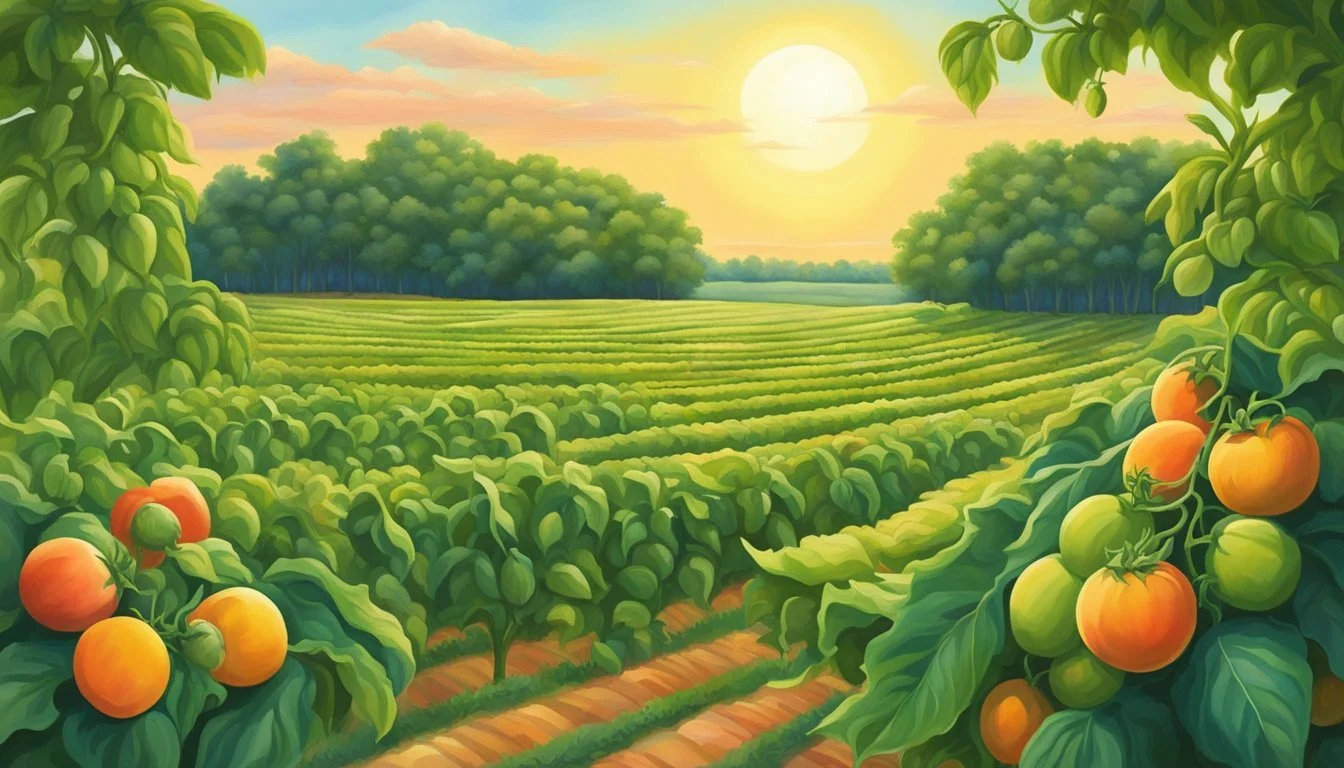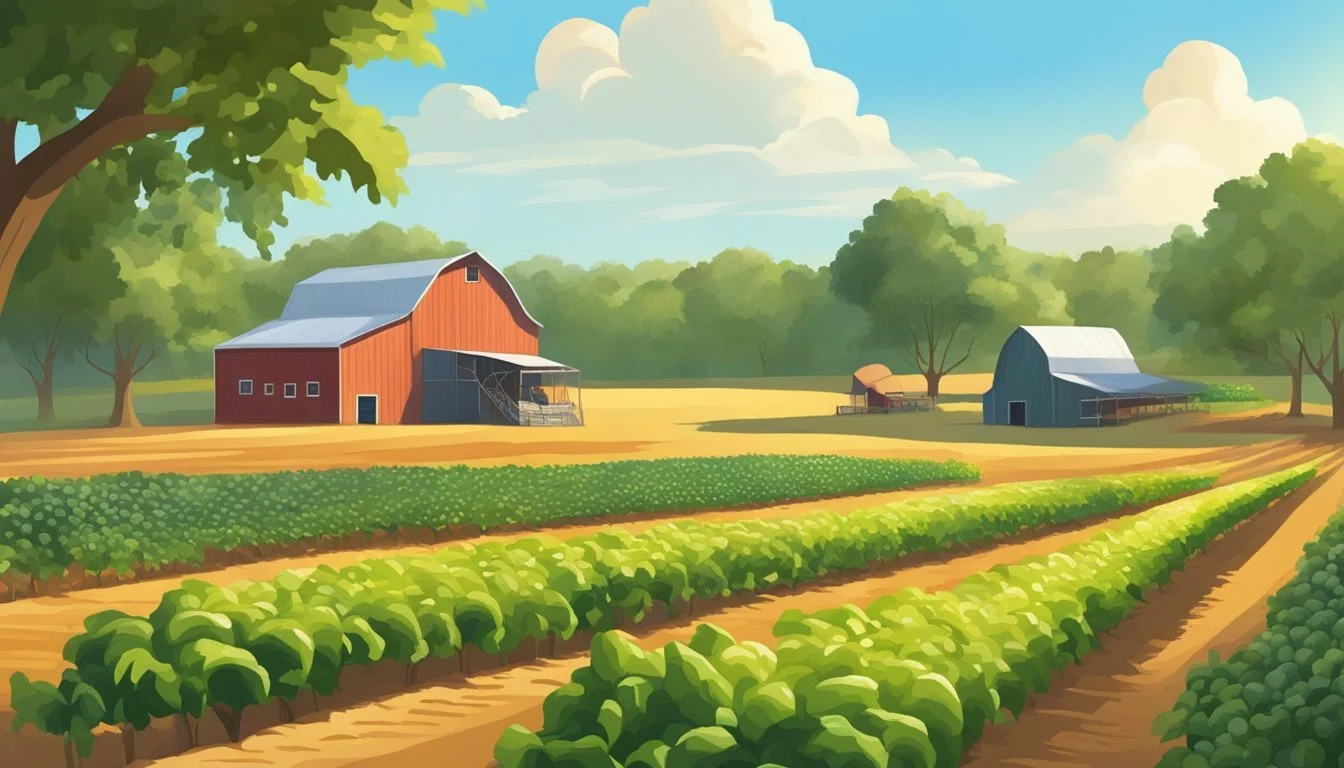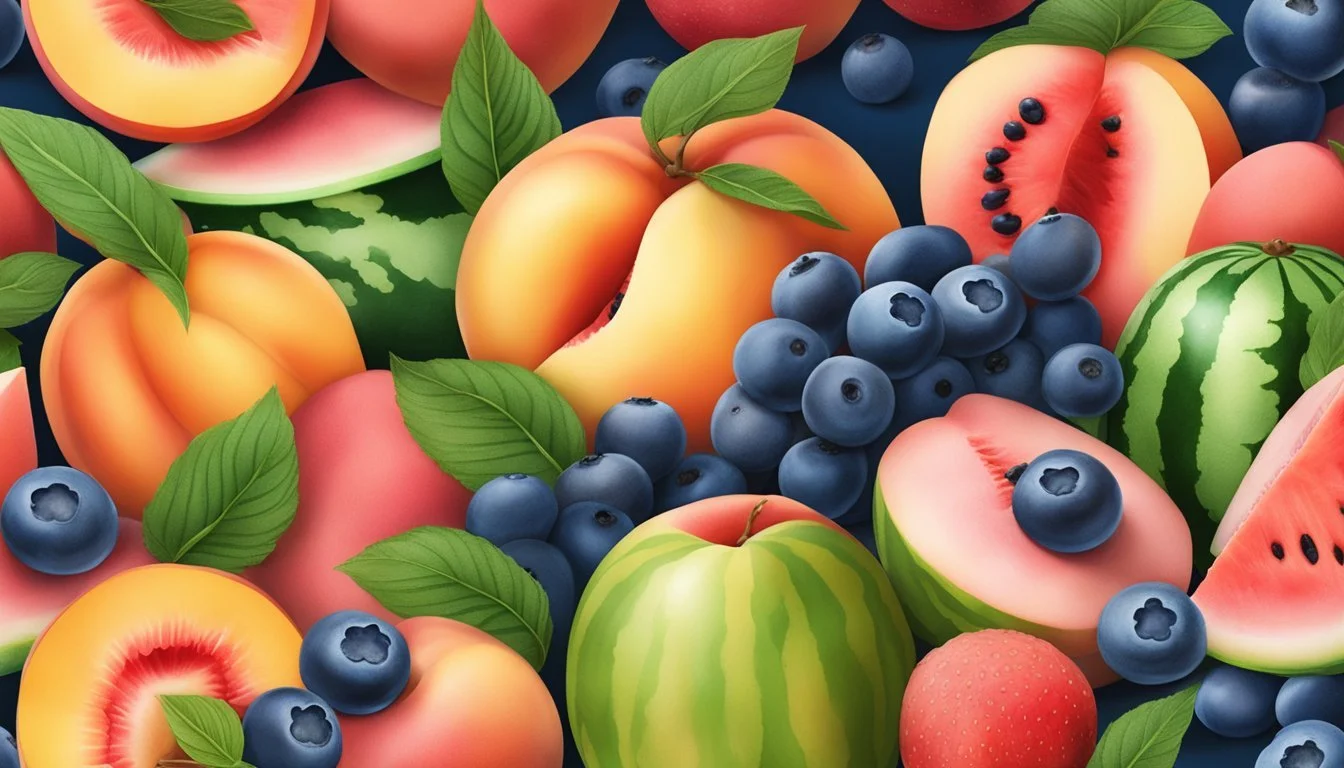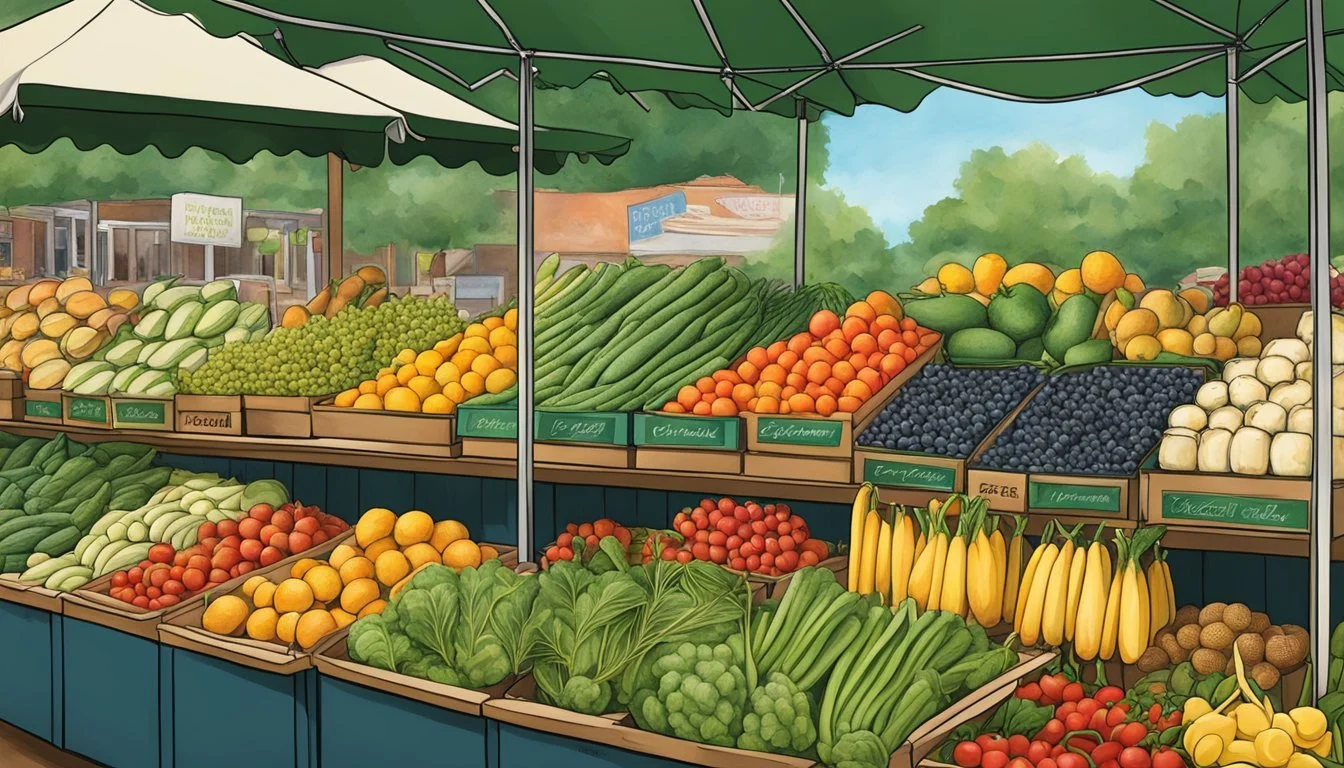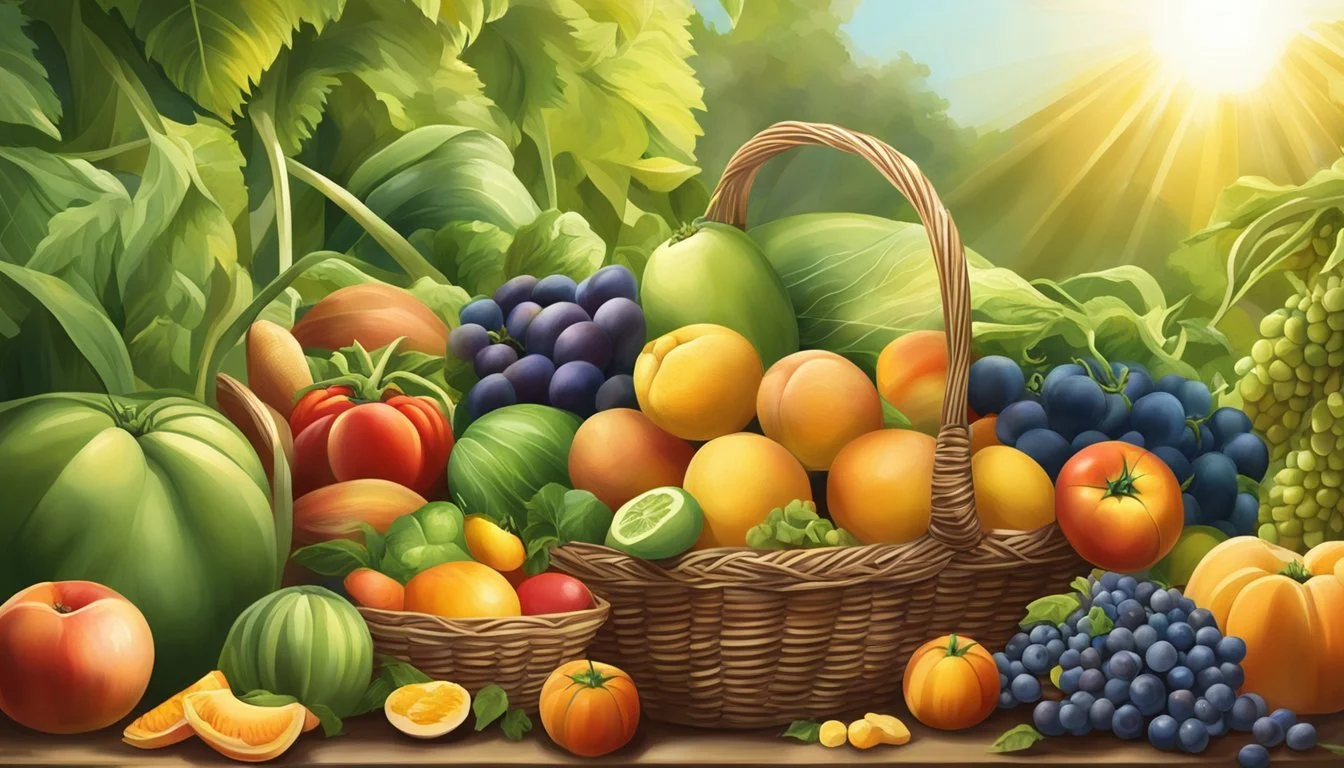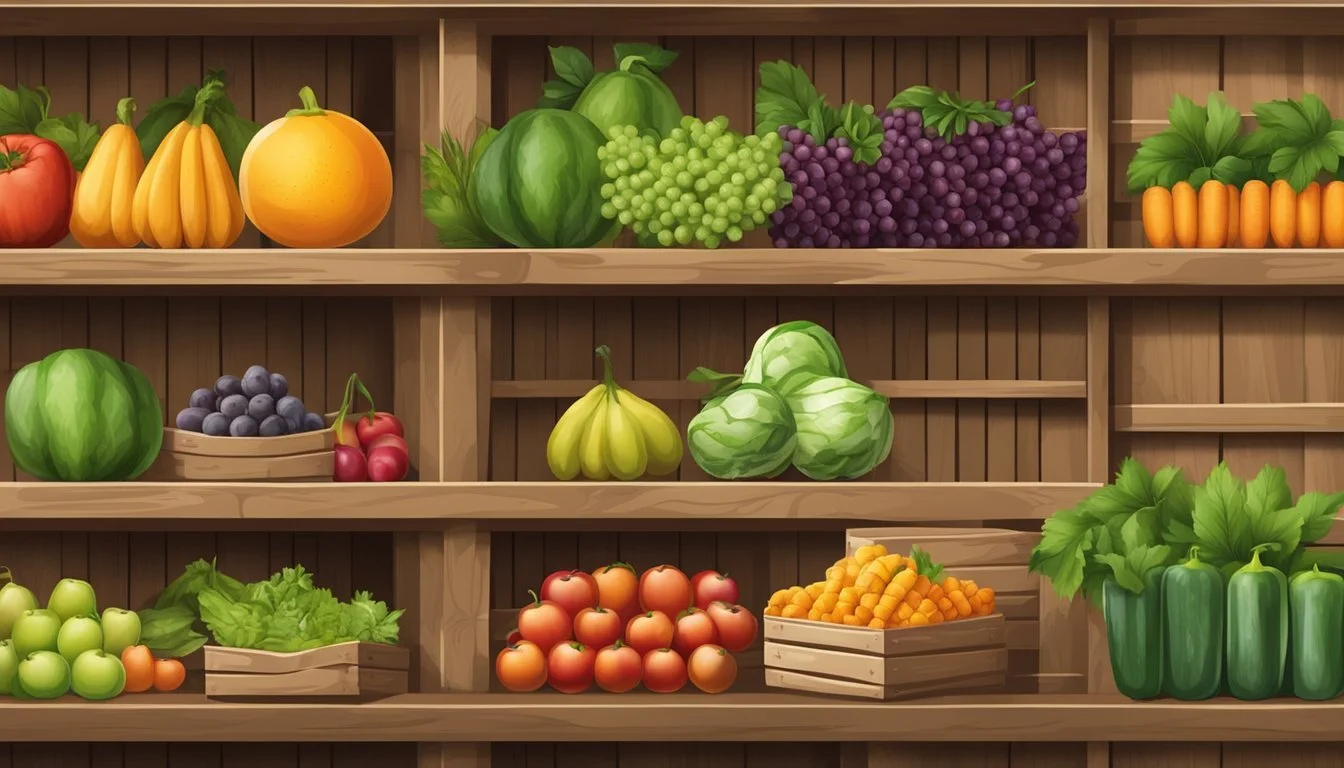Mississippi Seasonal Fruit & Vegetables in July
Your Fresh Picks Guide
This Article is Part of our Mississippi Seasonal Fruit & Veg Calendar
In the warm and fertile lands of Mississippi, July marks the high point of summer—a vibrant time when a diverse array of fruits (What wine goes well with fruits?) and vegetables reach their peak of ripeness. During this month, farmers' markets and roadside stands are abundant with fresh produce, reflecting the state's agricultural richness. Consumers who prioritize fresh, local, and wholesome foods find July an exceptional month to explore the variety of Mississippi's seasonal offerings.
Mississippi's climate and soil conditions create an ideal environment for cultivating a variety of produce that thrives in the summer heat. The sun-ripened fruits typical for this time include succulent watermelons and peaches, which become particularly flavorful and juicy. Notably, vegetables like okra, squash, cucumbers, and tomatoes (What wine goes well with tomatoes?) are also harvested, offering both culinary versatility and nutritional benefits.
As residents and visitors indulge in the fresh produce available during July in Mississippi, they also support the local economy and sustainable agriculture. By choosing seasonal items, one ensures freshness and taste, while also contributing to the reduction of food miles and the support of regional farmers. This seasonality of produce not only benefits the environment but also brings communities together, celebrating the state's agricultural heritage through various summer fairs and food festivals.
Overview of Mississippi's Growing Seasons
Mississippi, with its humid subtropical climate, has distinct growing seasons that cater to a variety of fruits and vegetables. The summer season, particularly July, is a peak time for an abundance of produce due to the state's long, warm days and typically sufficient rainfall.
Summer: During summer, which includes July, Mississippi experiences hot and humid weather, with average high temperatures ranging from the mid-80s to low-90s Fahrenheit. This season is vital for the ripening of many fruits and the growth of heat-tolerant vegetables.
Here is a brief outline of what one can expect from Mississippi's growing seasons:
Warm Season (April to October):
Fruits: Peaches, Watermelons, Blueberries
Vegetables: Tomatoes, Sweet Peppers, Cucumbers
Cool Season (November to March):
Fruits: Apples, Pears
Vegetables: Greens, Cabbages, Root Vegetables
The state classifies its gardening zones on a chart, which guides the planting and harvesting times for various crops. In southern parts of Mississippi, gardeners can start planting earlier due to milder early-year temperatures compared to the northern regions.
Mississippi's fertile soil and sufficient humid conditions throughout the growing months give gardeners and farmers an advantage in producing a diverse range of crops. From the alluvial plains of the Delta to the coastal regions along the Gulf, each area within the state has microclimates that slightly alter the general planting schedules.
Gardeners must remain watchful of the state's weather patterns, which can include severe thunderstorms and high humidity, to protect their crops and ensure optimal growth and yield.
Seasonal Fruit Availability in July
Mississippi is lush with a variety of fruits in July. Residents and visitors can find an abundance of fresh produce, bursting with flavor during this month. Below is a guide to the fruits that are typically ripe and ready to enjoy:
Blueberries: A staple in the Mississippi summer, blueberries are at their peak, perfect for pies or fresh eating.
Peaches: Juicy and fragrant, peaches are in full swing, ready to be savored in cobblers or enjoyed as a fresh snack.
Plums: These stone fruits offer a sweet and tart flavor, ideal for jams or eating out of hand.
Watermelons: Synonymous with summer, watermelons are a refreshing treat, with their peak harvest in the heat of July.
Cantaloupes (how long does cantaloupe last?): These melons are another juicy delight, known for their succulent and sweet flesh.
Nectarines: Smooth-skinned cousins to peaches, nectarines provide a similar juicy experience and are ripe for picking.
Blackberries (how long do blackberries last?): Early July is the tail end of blackberry season, so these berries are still available, ripe for baking or making preserves.
Muscadines: Although beginning later in the summer, some early varieties of this southern grape may start to appear by the end of July.
Figs: This lusciously sweet fruit starts to come into season, adding a unique flavor to any dish.
Pears: While the main harvest comes later, some early varieties of pears might be found by late July.
Shoppers should remember that weather can affect the exact timing of fruit ripeness, so it's always best to check with local farms or markets for the day's freshest picks.
Seasonal Vegetable Availability in July
July in Mississippi is a high season for a diverse array of vegetables, offering a bountiful harvest for locals and consumers looking for fresh and flavorful produce.
Corn is at its peak, known for its sweet and tender kernels. Home cooks and chefs alike treasure this staple for its versatility in salads, grilling, and side dishes. Tomatoes, bursting with juiciness, are also readily available, perfect for everything from salads to sauces.
An abundance of peppers arrive in a variety of colors and levels of heat, enhancing dishes with their crisp texture and vibrant flavors. Eggplant (What wine goes well with eggplant?) and okra grace tables with their distinctive textures, suited to both frying and stewing.
Hearty squash and cucumbers are plentiful, refreshing choices for summer meals. Green beans, another favorite, are crisp and perfect for a quick sauté or a longer, savory braise. Gardeners and farmers harvest both, including robust potatoes, and their sweeter counterpart, sweet potatoes.
The legume family offers both beans in their various forms—pole and green—being ready for picking. In the leafy greens department, lettuce, kale, and chard are in abundance, promising a wealth of salads and healthy sautéed or steamed dishes. (What wine goes well with steamed dishes?)
Finally, root vegetables like carrots deliver a crunch and sweetness, ideal for both raw eating and cooking. While not in their prime, cauliflower and cabbage can still be found, contributing to the variety that constitutes Mississippi's July selection of vegetables.
Vegetable Description Corn Sweet, tender Tomatoes Juicy, versatile Peppers Crisp, colorful Eggplant Distinct texture Okra Ideal for frying/stewing Squash Hearty summer vegetable Cucumbers Refreshing, hydrating Green Beans Crisp, versatile Potatoes/Sweet Potatoes Robust, sweet Beans Varied, ready for picking Lettuce/Kale/Chard Leafy and lush Carrots Crunchy, sweet Cauliflower/Cabbage Available, diverse
This list highlights the seasonal availability, ensuring that consumers can plan their meals with the freshest ingredients in mind.
Planting and Harvesting Timelines
In July, Mississippi's gardeners are busy with both planting and harvesting. They take advantage of the state's warm climate to seed certain crops and gather mature produce.
Crops to Plant: July is the proper time for planting certain vegetables and legumes that thrive in the warm weather. Although the window for planting some crops has passed, gardeners can still plant:
Pumpkins: Ready for the fall season, pumpkins should be sown now to ensure a timely harvest around Halloween and Thanksgiving.
Peanuts: A classic Southern crop, peanuts can be planted, as they prefer the long, warm growing seasons.
Here is a simplified timeline:
Crop Planting Time Pumpkins Early to mid-July Peanuts July (depending on variety and region)
Crops to Harvest: Simultaneously, some crops that were planted earlier in the season are ready to be harvested in July. Gardeners gather a variety of mature vegetables and fruits:
Crop Harvest Time Tomatoes Early July onward Green Beans July (depending on planting date) Okra July (if planted in spring) Peaches Early to late July Blueberries Concludes in July
July is neither solely for planting nor just for harvest; it's a pivotal month where Mississippi gardeners balance between starting new crops such as pumpkins and peanuts and reaping the benefits of their spring plantings with a variety of both vegetables and fruits.
Agricultural Zones and Crop Suitability
Mississippi's diverse climate is categorized by the U.S. Department of Agriculture (USDA) into plant hardiness zones. These zones provide a guide for what plants are most likely to thrive given the average minimum winter temperatures. In Mississippi, zones 7 through 9 are predominant, with the majority of the state falling into zone 8b, as per the latest USDA zone map updates.
The suitability of crops is closely tied to these hardiness zones. For instance, summer crops in Mississippi benefit from the warm climate prevalent throughout the state. By July, many fruit and vegetable plants are in full productivity. Here's a look at a few suitable plants for each zone:
Zone 7: While this is the coolest zone in Mississippi, it is still appropriate for a range of plants. July is a good time for harvesting vegetables such as tomatoes and green beans that were planted earlier in the season.
Zone 8: This zone covers much of Mississippi and presents a wide range of growing opportunities. In July, crops suitable for harvest include okra, peppers, and sweet corn, with each thriving in the warm conditions.
Zone 9: This zone, typically found in the southernmost parts of the state, supports tropical and subtropical plants. Citrus fruits and sweet potatoes are among the crops that excel in this warmer climate.
It is important to note that while the hardiness zone provides a general framework for planting, local conditions such as soil types, humidity, and water availability also play significant roles in determining crop suitability. Gardeners in Mississippi are advised to consider all these factors in addition to hardiness zone data when planning their gardens.
Local Markets and Seasonal Produce
July marks the peak of the summer season in Mississippi, and local markets teem with an abundance of fresh fruits and vegetables. Visitors to farmers markets will find that growers proudly offer a variety of produce, reflecting the state's rich agricultural heritage.
Fruits: July is a prime time for berry lovers. Both blueberries and blackberries are in ample supply, perfect for pies, jams, or just eating fresh.
Fruits Available in July Blueberries Blackberries
Vegetables: Those looking for fresh vegetables in July will be rewarded with a diverse selection. Grocery stores and local farmers markets feature locally sourced items such as tomatoes, cucumber, and squash, each rich in flavor and nutrients.
Vegetables in Season Tomatoes Cucumbers Squash
Agriculture plays a significant role in Mississippi's economy, and this is evident in the freshness and quality of produce during July. The calendar for agriculture and grocery stores aligns closely with the harvest times, ensuring that consumers get to enjoy produce at its peak freshness.
Farmers markets are a vibrant scene in July, not just for the produce but also for the sense of community they foster. Shoppers engage directly with growers, gaining insights into the food's origin and best preparation methods. These markets act as vital hubs for sustaining local agriculture and allowing consumers to support the local economy.
Nutritional and Culinary Benefits of Seasonal Produce
Seasonal produce provides significant nutritional advantages. Vegetables and fruits picked at their peak maturity contain more vitamins and minerals. Take, for example, blackberries and blueberries that are available in July in Mississippi; these berries are high in antioxidants, vitamin C, and fiber due to their seasonal freshness.
From a culinary perspective, chefs and home cooks alike appreciate the superior flavor of seasonal fruits and vegetables. The taste quality of ripe, freshly harvested produce is unparalleled. Mississippi's July offerings, such as sweet corn and tomatoes, bring natural sweetness and robust flavors to dishes that are hard to match with out-of-season counterparts.
Sustainability is an added benefit of eating seasonal produce. By choosing fruits and vegetables like zucchini and bell peppers in their natural growing season, consumers support local farming and reduce the environmental impact associated with long-distance transportation.
Here's a quick glance at some produce typically available in Mississippi during July:
Fruits: Blueberries, Blackberries, Peaches
Vegetables: Sweet Corn, Tomatoes, Okra, Cucumbers, Bell Peppers, Zucchini
Chefs often recommend these fruits and vegetables for summer salads, grilling, and fresh salsas (how long do fresh salsas last?) due to their vibrant colors, textures, and flavors, which can enhance a wide variety of dishes. Incorporating seasonal produce into one's diet is not only a choice for better health; it can also be seen as an investment in the local economy and the well-being of the environment.
Preservation and Storage of Seasonal Produce
Preserving the freshness of seasonal fruits and vegetables involves different storage techniques for various types of produce:
Refrigeration: Most berries, greens, and vegetables like cucumbers and green beans should be stored in the refrigerator. They should be kept in a crisper drawer to retain their freshness and use within a week.
Counter Storage: Tomatoes, melons, and peaches ripen well on the countertop. It's advisable to consume them once they've reached peak ripeness to enjoy their full flavor.
For specific produce preservation methods, one can employ the following:
Freezing: Many fruits and vegetables can be frozen to extend their shelf life. Blanching vegetables before freezing can preserve color, texture, and nutritional value.
Produce Preparation Green Beans Trim, blanch, freeze Peaches Slice, pit, freeze Berries Freeze in single layer
Canning: Canning is a method used for long-term storage. Tomatoes and peppers can be canned to make sauces and salsas.
Produce Method Tomatoes Can as sauce or whole Cucumbers Pickle and can
Drying: Herbs and peppers are suitable for drying. They should be stored in airtight containers once fully dehydrated.
By properly storing seasonal produce, consumers can enjoy Mississippi's bountiful July harvest for longer periods while minimizing food waste and maintaining nutritional benefits.

